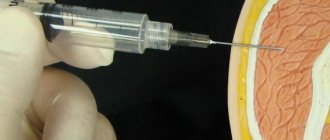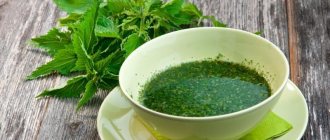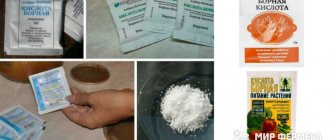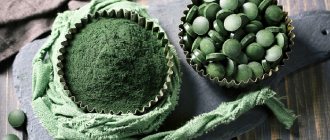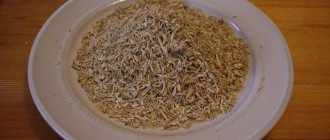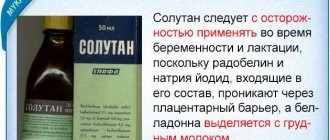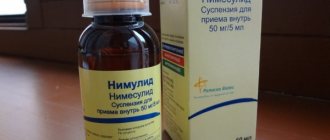Chemical properties
The substance is also called lapis, silver nitrate, “hell stone”. Chemical compound from inorganic chemistry, a salt formed by a metal and nitric acid . Molar mass of compound = 169.9 grams per mole. According to their physical properties, they are transparent, colorless crystals, in the form of small rods and plates. It dissolves well in water and ethyl alcohol . The substance darkens in the light and has a burning sour taste. Silver Nitrate formula: AgNO3, is the same as the racemic formula. Begins to decompose at temperatures above 300 degrees Celsius.
Chemical properties
Silver Nitrate solution reacts with hydrochloric acid and salts of hydrochloric acid . During the reaction, a white cheesy precipitate of Ag chloride , which is insoluble in nitric acid . When exposed to high temperatures, the decomposition of Silver Nitrate begins (approximately 350 degrees), releasing metal, oxygen and NO2. During the electrolysis of a silver nitrate solution, Ag is released at the cathode and oxygen at the anode. Thus, the substance dissociates into Ag+ and NO3– ions.
Salt is actively used in medicine; when developing film photographs; included in lapis pencil in combination with potassium nitrate ; in the production of dioxane , solvents for softening chemicals. The substance is used in the production of batteries, in forensic science, and in the textile industry.
Application
Silver nitrate is used:
- in electroplating as a source of silver ions;
- in analytical chemistry as a reagent for chlorides;
- in photography as a component of developers, enhancers and other solutions;
- in medicine, as a means for cauterizing the skin.
Use in medicine
Stains from silver nitrate on the skin Silver
nitrate is used in medicine in the form of an alloy of silver nitrate and potassium nitrate) sometimes cast in the form of sticks - a lapis pencil
for cauterization and sterilization of wounds, removal of small warts.
The therapeutic effect of silver nitrate is to suppress the vital activity of microorganisms; in small concentrations it acts as a cauterizing, anti-inflammatory and astringent, and concentrated solutions, like AgNO3 crystals, cauterize living tissue.
Lapis ( hell stone)
) was used by doctors Jan-Baptiste van Helmont and Francis de la Boe Sylvius, who learned to obtain silver nitrate by reacting the metal with nitric acid. They discovered that touching the crystals of the resulting substance leads to the appearance of black spots on the skin, and with prolonged contact, deep burns.
Pharmacodynamics and pharmacokinetics
Silver nitrate causes denaturation of protein molecules by binding carboxyl and sulfhydryl groups, changing the conformation of the molecule. The bactericidal effect of the substance occurs during the dissociation of the compound into ions. When the product interacts with proteins, silver albuminate , which has a black color. The substance disrupts the functioning of certain enzyme systems in microbial cells. The medicine has short-term bactericidal and long-term bacteriostatic effects. Even a highly diluted solution can have a strong bactericidal effect.
At a certain concentration of Ag ions, the substance exhibits astringent and anti-inflammatory properties, since precipitation occurs only in interstitial proteins. When high concentrations of the drug are used, loose albuminates and cell membranes and intracellular structures are significantly damaged.
Silver nitrate in medicine
As a rule, solutions and ointments based on lapis are used externally. Due to the property of destroying protein compounds and stopping the metabolism of pathogenic bacteria, the substance remains one of the most effective antiseptics and has a pronounced anti-inflammatory effect. The use of a weak solution is permissible on mucous membranes and skin. Beneficial effects of lapis:
- for ulcers and erosions, it has an epithelializing effect;
- helps heal cracks;
- in acute conjunctivitis, relieves inflammation;
- in case of burns, frostbite, removes necrotic tissue;
- cauterizes warts and benign tumors;
- stops diarrhea, has an astringent effect.
For internal use, tablets based on white clay are prescribed, which helps neutralize the excess causticity of the substance. Medicines based on the substance are used for gastritis, stomach and duodenal ulcers; the effectiveness of lapis against the bacteria Helicobacter pylori, which is the main cause of inflammatory diseases of the gastrointestinal tract, has been proven.
Reviews
Reviews about the drug are left mainly when trying to get rid of warts using a Lapis pencil :
- “... I used this remedy for 2 months on a wart on my hand. Now it seems to have gone away, only a small red spot remains”;
- “...The pencil didn’t help me at all. I tried everything until I went to the doctor and removed the tumor with ultrasound - it was all in vain”;
- “... The warts gradually began to turn black, the effect began to appear after a few weeks. After using the pencil, no more signs have appeared yet.”
Silver nitrate price
When it comes to the price of this dangerous substance, you need to understand for what purpose and in what volume the reagent is purchased. For individual use, you can buy salt in small quantities. Many enterprises offer small volume packaging - 40-50 grams. But this is for individual buyers. For enterprises and organizations, the volume of supplies is specified in tons or even tens of tons.
Prices for the drug offered today for individual buyers:
- Packaged in 1 gram – from 40 rubles;
- Packaging up to 50 grams – from 43 rubles per gram;
- For industrial consumers the price is 41,900 rubles per kilogram.
In Moscow you can buy silver nitrate at a price of 32 rubles per 1 gram*.
Ecology DIRECTORY
Silver nitrate, GOST 1277 - 75, analytical grade, 1% aqueous solution. [...]
Silver nitrate 1% solution. 1.0 g of silver nitrate is dissolved in 99 cm3 of distilled water.[...]
Silver nitrate and its solutions are stored in dark bottles with ground-in stoppers to protect them from light and dust.[...]
Silver nitrate. Dissolve 1.7 g of AgN03 in 100 ml of bidistillate. [...]
A solution of silver nitrate AgNO3 0.01 i.: 1.7 g of chemically pure salt Alg>SO3 is dissolved in distilled water and brought to the mark in a 100 cm3 flask, after which it is shaken to mix; 10 cm3 of the prepared solution is diluted to 100 cm3 and 0.01 N is obtained. solution. The titer of silver nitrate is determined by sodium chloride: exactly 0.1 N is placed in three porcelain cups, 20 cm3 each. sodium chloride solution (fixanal), add 2-3 drops of potassium chromate (10% aqueous solution) to each cup as an indicator and titrate the contents of the cups from a 0.1 N burette. solution A §K03 until a stable reddish color appears (silver nitrate is added dropwise). To establish a correction to the silver nitrate titer, take the average of the results of three titrations.[...]
Silver nitrate solution with a concentration of 0.02 mol/dm3: 3.4 g of silver nitrate (GOST 1277 “reagent grade” or “analytical grade”), weighed with an error of no more than 0.1 g, is placed in a measuring cup flask with a capacity of 1000 cm3 and dissolved in distilled water, bringing the volume to the mark. The exact concentration of the solution is checked by titration. To do this, take 10 cm3 of a chloride solution with a concentration of 0.01 mol/dm3 into the final flask, add 1 cm3 of a solution of potassium chromate with a mass fraction of 10% and titrate with a solution of silver nitrate until the color changes from yellow to red-brown. Titration is carried out three times and the arithmetic mean of the results of three titrations is used to calculate the exact concentration. The exact concentration of silver nitrate solution (X). mol/dml, calculated by the formula X = 0.01 ■ V: V¡, where 0.01 is the concentration of the chloride solution taken for titration, mol/dm '; V is the volume of chloride solution taken for titration, cmL; V/ is the volume of silver nitrate solution used for titration, cm [...]
Reaction with silver nitrate. Add 2-3 drops of AgNO3 solution to 2 ml of fertilizer solution and shake the contents of the test tube. The appearance of a white precipitate of silver chloride that curdles when shaken indicates the presence of chlorine in the fertilizer. If a yellow precipitate forms, the fertilizer contains phosphorus (silver phosphate formed during the reaction is yellow). Silver nitrate also gives a white precipitate with sulfate ion, but in this case the precipitate is formed in a much smaller volume than when the sulfate ion reacts with barium chloride.[...]
To set the titer of silver nitrate, take 10 ml of sodium chloride solution, pour it into a conical flask, dilute to 100 ml with distilled water, add 1 ml of potassium chromate solution and titrate with a solution of silver nitrate. After the lemon-yellow color of the solution, cloudy from silver chloride, turns into an orange-yellow color that does not disappear for 15-20 seconds, the titration is completed. To clarify the obtained approximate result, add 1-2 drops of titrated sodium chloride solution to the titrated solution until the reddish tint disappears and titrate a new portion of sodium chloride, using the first titrated solution as a color standard. The titration is considered complete as soon as a slight difference in shades that does not disappear when shaking the solution is noticed: orange in the titrated solution and pure yellow in the standard. [...]
To set the silver nitrate titer, pour 10 ml of a titrated solution of sodium chloride and 00 ml of distilled water into a conical flask, add 1 ml of potassium chromate and titrate with silver nitrate until the yellow color of the titrated solution turns brownish. The correction factor will be determined as the quotient of 10 divided by the number of milliliters of silver nitrate consumed.[...]
Using a titrated solution of silver nitrate, the titer of ammonium thiocyanate is determined in the following way. To 20 ml of inaccurate 0.1 N. a solution of silver nitrate taken in a conical flask, add 30 ml of ferric ammonium alum and 30 ml of distilled water. In the case of drilling of the liquid due to the formation of iron oxide hydrate, carefully, without allowing excess, pour in a few drops of nitric acid to clarify the sample; then the latter is titrated from a burette with a solution of ammonium thiocyanate until iron thiocyanate is formed, which is recognized by the appearance of a brownish-pink color.[...]
The reaction with silver nitrate serves to open chlorine and phosphoric acid ions. Silver chloride precipitates as a white precipitate that coagulates when shaken. Silver phosphate is yellow in color. Silver nitrate also reacts with the sulfuric acid anion, and a heavy (non-curdling) white precipitate also forms, but of a much smaller volume than from the addition of barium chloride. With quicklime and slaked lime, silver nitrate gives a brown precipitate of silver oxide, soluble in acetic acid. [...]
When titrating chlorine ions with silver nitrate, silver chloride first precipitates, and the solution retains a yellow color due to the presence of Ce 0 ions.[...]
The reaction of barium chloride or silver nitrate with a sparingly soluble fertilizer is carried out by adding 2-3 drops of the indicated reagents to the clear liquid above the undissolved fertilizer (to the extract).[...]
To charge the reducer, take 60 g of silver nitrate, obtained by any of the mastered methods, and dissolve it in 400 ml of distilled water, acidified with a few drops of nitric acid. A strip of thin electrolytic copper sheet is immersed in the solution, fixed at one end to a glass rod, which is placed on the edge of the glass, and make sure that the immersion surface of the strip is approximately 10 cm2. The solution is stirred until silver is released. The end of the reaction is determined by taking 1-2 ml of sample, to which a few drops of dilute hydrochloric acid are added. Cloudiness of the solution indicates that the reaction is not complete. After all the silver has been deposited, the tape is removed, having previously washed off the grains of metal from it. The precipitate is washed by decantation with a diluted (1:200) solution of sulfuric acid until most of the copper is removed (the washing liquid is colorless). Then the silver is shaken with water and the mixture is poured into a reducer, into which several glass beads and a layer of glass wool 2-3 mm thick have previously been placed. The reducer tube is filled with a layer of silver 12-15 cm high and washed with diluted (1:200) sulfuric acid until copper ions are completely removed. After this, the gearbox is filled with diluted (1:9) hydrochloric acid. The silver in the gearbox must be under a layer of acid.[...]
Reagents. 1) Titrated solution of silver nitrate. 4.791 g of silver nitrate is dissolved in 1 liter of distilled water. Mix well and store in a dark glass bottle. 1 ml of this solution corresponds to 1 mg of chlorides.[...]
Prepare 0.02 N. titrated solution of silver nitrate - 3.4 g of salt is dissolved in distilled water and the volume of the solution is adjusted to 1 liter in a volumetric flask. The titer is set to 0.1 N. sodium chloride solution.[...]
Next, the solution is titrated with 0.02 N. solution of silver nitrate AgNO3 until a faint pink color of the precipitate appears, adding 1 ml of a 1% solution of potassium chromate K;Cl4 as an indicator. [...]
If we subtract the number of milliliters of potassium or ammonium thiocyanate from the number of milliliters of silver nitrate, we obtain milliliters of silver nitrate spent on the precipitation of chlorine ions. The titer of silver nitrate is set so that 1 ml corresponds to 1 mg of chlorine. Multiplying the resulting difference by the corresponding coefficient, we obtain the number of milligrams of chlorine in 1 liter of solution. [...]
The principle of Mohr's method is based on the precipitation of chlorides with silver nitrate in the presence of potassium chromate K2Cl4. If there are chlorides in the solution, AdM03 binds to them and then forms orange-red silver chromate.[...]
Determination of chlorides. Chlorine ions are precipitated with titrated silver nitrate, which is added to the nutrient solution in excess. Unreacted silver nitrate is titrated with ammonium or potassium thiocyanate, using dry ferroammonium alum as an indicator. For convenience, the titers of silver nitrate and thiocyanate are made the same. In this case, the difference between the number of milliliters of silver nitrate added to the solution and the number of milliliters of thiocyanate used to titrate the excess silver gives the exact volume of the silver nitrate solution spent on the formation of insoluble silver chloride.[...]
Principle of the method. The method is based on titration of an aqueous extract with silver nitrate in the presence of potassium chromate. The essence of this method is that the solubility of silver chloride is significantly less than that of silver chromate.[...]
The absence of chlorine ions in the wash water is monitored with silver nitrate. At. adding several fonts of silver nitrate solution to several ml. There should be no squealing or opalescence in the rinsing water. The absence of turbidity or opalescence indicates completeness of washing.[...]
In the practice of volumetric analysis, a solution of silver nitrate is used as a titrated solution (argentometric method).[...]
Combined silver chloride and copper chloride methods consist of the simultaneous introduction of chlorine and silver or copper ions into water. The enhancement of the bactericidal effect of chlorination in the cold season is within the limits of the total bactericidal effect of chlorine and silver or copper ions. Due to the fact that the bactericidal effect of silver increases with heating, the bactericidal effect of the silver chloride method increases in the warm months of the year. The silver chloride method is used not only to disinfect drinking water, but also to prevent re-bacterial contamination. This method is effective in conditions of long-term storage of purified water. Obtaining the required concentration of silver ions is achieved by introducing silver nitrate or anodic dissolution of silver (see chapter [...]
Manganese compounds are dissolved in a mixture of acids and oxidized with ammonium persulfate in the presence of a catalyst - silver nitrate - to manganese acid, which colors the solution pinkish-violet. The amount of manganese is determined by the intensity of the color of the solution.[...]
The method is based on the extraction of compounds of the element from the soil, the oxidation of manganese to manganese acid with ammonium persulfate in the presence of silver nitrate as a catalyst, and measurement of the optical density of the pink-violet-colored solution. The interfering influence of chlorides is eliminated by evaporating the analyzed extract to dryness with nitric and sulfuric acids. With the help of phosphoric acid, the iron that interferes with the determination is bound into a colorless complex.[...]
Wash the filter two to three times so that the total volume of the filtrate and washing water in the flask is about 35 cm3. Then add 10 cm3 of a 1% solution of silver nitrate and mix. In this case, there should not be any strong turbidity of the solution due to the formation of silver chloride. About 0.3 g of ammonium or potassium persulfate is added to the solution, heated to a boil and kept in a water bath for 5 minutes. After cooling, the solution is brought to the mark with distilled water and its color is compared with an exemplary standard scale or measurements are carried out using a photoelectric colorimeter with a green light filter (A = 530 nm) in cuvettes with a working layer thickness of 20-50 mm. [...]
Silver chloride electrodes are used for measurements. They are made by electrolytic silvering of a platinum plate or wire in a solution of silver nitrate (35 g AgN03-40 g KS1 per 1 liter of water) for 24 hours at a current density of 1-2 mA/cm2, followed by chlorination in a 0.1 molar solution of HC1 at a current density of 5-6 mA/cm2.[...]
Pipette 10 cm3 of sodium chloride solution and 90 cm3 of distilled water into a conical flask, add 1 cm3 of potassium chromate solution and titrate with a solution of silver nitrate until the lemon-yellow color of the cloudy solution changes to orange-yellow, which does not disappear within 15-20 s . The result obtained is considered indicative. Add 1-2 drops of sodium chloride solution to the titrated sample until a yellow color is obtained. This sample serves as a control sample for repeated, more accurate determination. To do this, take a new portion of sodium chloride solution and titrate with silver nitrate until a slight difference in shades of faint orange in the titrated solution and yellow in the control sample is obtained. [...]
An empirical solution is a solution, each milliliter of which, when reacting, binds a certain amount of a chemical substance. For example, if a sample of silver nitrate in the amount of 4.792 g is dissolved in 1 liter of distilliroea [...]
Then place the beaker with the sample on a magnetic stirrer and turn on the automatic titration unit and titrate the solution to the specified EMF value. At the end of the titration, the consumption of silver nitrate through the burette is recorded.[...]
A sample of an aqueous extract with a volume of 2 to 20 cmJ is taken with a dispenser or pipette into a conical flask, distilled water is added to a volume of 20 - 30 cm3, 1 cm3 of a solution of potassium chromate with a mass fraction of 10% is titrated with a solution of silver nitrate until the color changes from yellow to red. brown.[...]
Qualitative reaction. To make a preliminary judgment about the presence of chlorine in the soil, take about 5 ml of a clear filtrate of the water extract into a clean test tube (for its preparation, see page 83) and add one drop of silver nitrate (lapis) from the same dropper. If chlorine is present in the extract, then the filtrate becomes cloudy after adding lapis (when there is a lot of chlorine, a loose cheesy precipitate forms in the test tube with gentle shaking).[...]
Determination of chloride ion. Using a dispenser or pipette, take 2-20 cm3 of the analyzed extract into a beaker. The sample volume for analysis is set as described on p. 112. Add 1 cm3 of nitric acid diluted 1:150 to the sample using a dispenser or from a burette. Fill the burette with a solution of silver nitrate with a concentration of 0.02 mol/dm3.[...]
To do this, 0 is placed in a series of glasses with a volume of 100 cm3; 0.5; 1.0; 1.5; 2.0; 2.5 cm3 of a standard reference solution containing 100 μg/cm3 of manganese, add 25 cm3 of 10% sulfuric acid and equalize the volumes of the solutions to 40 cm3 with bidistilled water. Then add 2 cm3 of concentrated orthophosphoric acid, 2 cm3 of a 1% solution of silver nitrate and heat to 80 - 90 ° C for 5-10 minutes. Next, all operations are carried out as indicated above for the analyzed solutions. [...]
Add 1 ml of 2% potassium iodic acid solution to the scale and to the samples, mix and place in a boiling water bath for 15 minutes. After cooling, compare the intensity of the pink color of the samples with a standard scale or measure the optical density of the solution in a 10 mm cuvette at 520 mmk. When measuring visually, ammonium persulfate can be used instead of potassium hydroxide to oxidize manganese. To do this, add 0.1 ml of a 1% silver nitrate solution and 1 ml of a 10% ammonium persulfate solution to the standard and sample scale solutions. The solutions are shaken and heated for 5 minutes in a water bath at 60 °C (not higher). [...]
For the latter criteria, as well as for the purpose of general characterization of the content of organic impurities in water, the rapid determination of the carbon of organic substances is very important. Methods for directly determining this indicator are based on measuring carbon dioxide released during the complete oxidation of organic compounds [34]. A quick express analysis according to Nekrasov [35] is carried out without evaporating a water sample using 1-N as an oxidizing agent. solution of potassium dichromate with the addition of potassium persulfate (40 g/l) and silver nitrate or potassium permanganate (1 g/l), the acidic reaction of the medium is created by a mixture of concentrated acids (two parts sulfuric and one part phosphoric, by volume).[...]
Depending on the results of the qualitative determination, 100 cm3 of the test water or a smaller volume (10-50 cm3) is taken and adjusted to 100 cm3 with distilled water. Chlorides in concentrations up to 100 mg/dm3 are determined without dilution. The pH of the titrated sample should be between 6 and 10. If the water has a color value above 30°, the sample is decolorized by adding aluminum hydroxide. To do this, add 6 cm3 of aluminum hydroxide suspension to 200 cm3 of sample, and the mixture is shaken until the liquid becomes discolored. The sample is then filtered through an ashless filter. The first portions of the filtrate are discarded. A measured volume of water is added to two conical flasks and 1 cm3 of potassium chromate solution is added. One sample is titrated with a solution of silver nitrate until a faint orange tint appears, the second sample is used as a control sample. With a significant content of chlorides, a precipitate A SL is formed, which interferes with the determination. In this case, add 2-3 drops of the titrated NaCl solution to the titrated first sample until the orange tint disappears, then titrate the second sample, using the first as a control sample. [...]
Exact solutions of liquid acids, alkalis and most solids cannot be prepared by dissolving a certain sample or a certain volume, since they contain a certain amount of impurities, or their composition does not exactly correspond to the chemical formula. Thus, on the surface of pieces of caustic alkalis there is always a certain amount of carbonate; crystalline hydrates are often weathered to some extent, that is, they lose part of the water of crystallization; Liquid acids and ammonia contain water, the amount of which is difficult to determine with sufficient accuracy. There are relatively few substances whose exact solutions can be prepared by dissolving a specific sample. Such substances in chemical analysis are called parent substances.[...]
In the microscope eyepiece
In histology - the science of tissues of plants, animals and humans, silver nitrate is successfully used as a coloring compound, which is used to process transparent and colorless micropreparations. The pigmentation process occurs on special meshes where ultrathin sections of tissue are placed. Treated with silver nitrate, such histological objects are placed under a microscope for viewing or photographing.
Since silver nitrate is necessary for many important sectors of the national economy, it is actively offered on the market of chemical raw materials. Silver nitrate, the price of which ranges from 22 to 33 rubles. per gram, can be purchased in analytical grade and chemically pure grades.
Company advantages
You can purchase crystalline powder for preparing a solution of silver nitrate in the quantity you need in the store. Our advantages are:
- Strict control at all stages of production;
- Product compliance with modern quality standards;
- Flexible pricing policy;
- Carrying out wholesale and retail sales;
- Fast order fulfillment;
- Delivery throughout St. Petersburg and the Leningrad region;
Free telephone number for consultation (9:00 - 18:00 Moscow time)8 (800) 550-24-21
Submit your application: [email protected]
